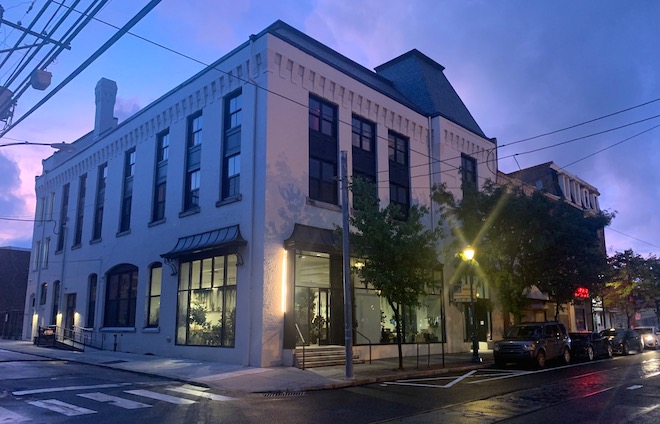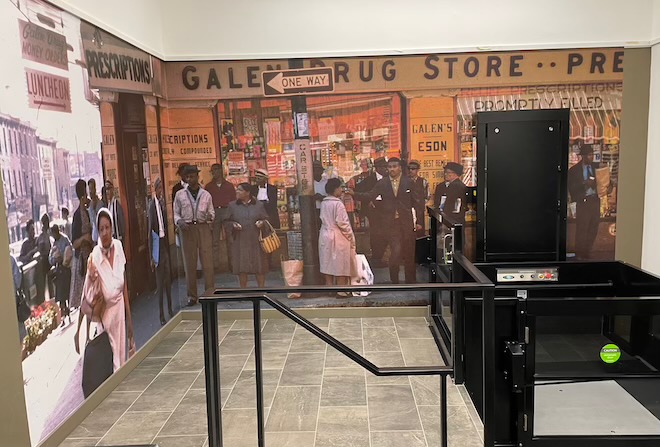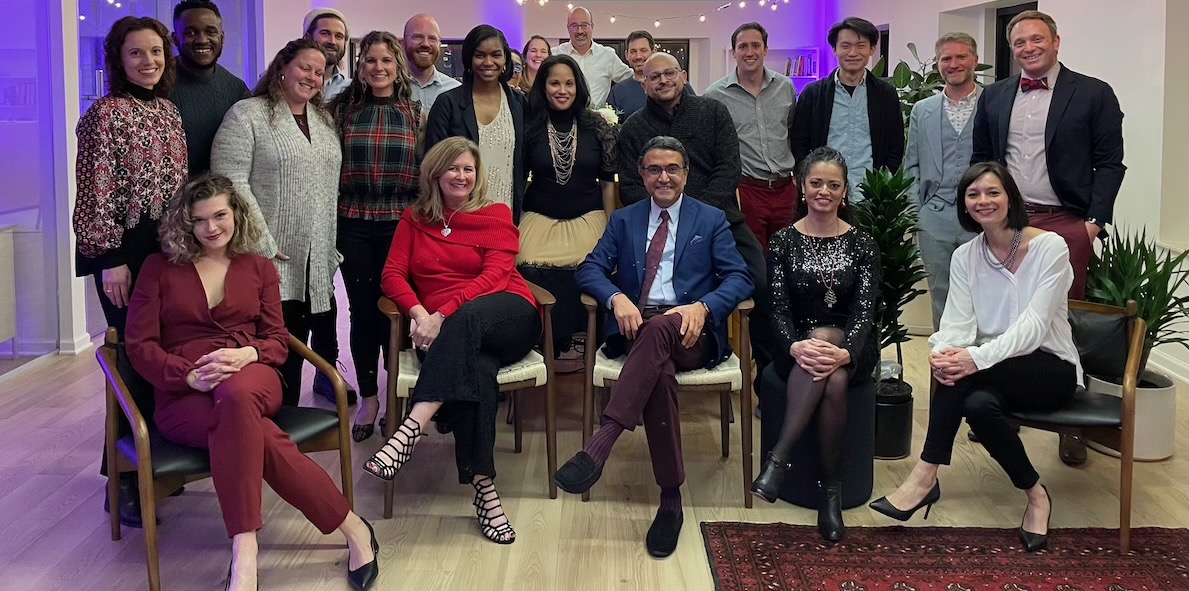Soon after Omar Blaik joined the University of Pennsylvania as vice president of facilities in the mid-1990s, he hosted a town hall at the Rotunda. The meeting invited the university community and local residents to share their visions for the West Philadelphia neighborhood’s future. An elderly woman stood up to ask a question:
“Are you moving me again?”
This straightforward query inspired Blaik’s career of negotiating thoughtful, ahead-of-its-time urban development, first in West Philly, now, across the country. His firm U3 Advisors has managed university and hospital expansion projects that seek to improve often distressed neighborhoods — without displacing neighbors.
And it all started in Philly. “It’s really remarkable how Philadelphia has really led the urban transformation of every other city in the country, but nobody talks about it,” he says.
Town and gown
Decades earlier, this woman and about 5,000 residents, almost all of them Black, were forced out of their neighborhood — then called Black Bottom, spanning 32nd to 40th Street and Lancaster and Powelton avenues to Sansom Street — for the sake of “urban renewal.” Their homes and businesses were razed so the area’s higher learning institutions could move in and establish what’s now called University City.
The eminent domain project had the full support of local political leaders. The heavy-handed result would later be disdainfully dubbed Penntrification (although the University of the Sciences, Drexel and Presbyterian Hospital all had roles to play).
As Blaik remembers that moment, “I froze. I probably aged 10 years in those 10 seconds,” he recalls. “I said, We’re not moving anybody. We’re a voice among many voices. We want to know what you guys want so we could be very sensitive to that. I did not forget that moment.”
He made it his goal to undo “the sins, the ugliness, the racism, all happened in the 60s and 70s,” he says. “We were coming to put the neighborhood back together again.”
No one wants to live in a dangerous or dirty neighborhood. Everyone wants to improve where and how they live. There just needs to be a balance so improving life for some does not come at the expense of others.
During Blaik’s decade-long stint at Penn, the university invested more than $2 billion in new construction and $700 million in real estate development, moving the school from an insular, self-focused institution into a more active member of the West Philadelphia community. Organizations including the Urban Land Institute and the American Institute of Architects have applauded these efforts.
While some town-and-gown tensions remain — and have most recently flared up over the fate of the University City Townhomes, and in 2021, Schuylkill Yards — there’s no doubt the relationship between the school and its surroundings have drastically improved.
Barry Grossbach, past president of the Spruce Hill Community Association and current chair of the neighborhood’s zoning committee, says Blaik is “one of the good ones.” He didn’t force developments on neighbors or pretend to listen to their concerns before dismissing them, Grossbach says.
“Omar’s been very creative and a real asset to the neighborhood. Gentrification is a charged word, but that’s not what was happening during Omar’s time in real estate (at Penn).”
New guy in town
Blaik first came to Philadelphia from New York, where he’d been a consultant in the higher education division of the financial and consulting firm Coopers & Lybrand, the predecessor of PwC. Among his projects there: Working with Columbia University when it was deciding whether to grow from its landlocked campus or to move to another part of Manhattan. The university decided to stay where it was and expand by working with, not against, its neighbors.
At Coopers & Lybrand, Blaik had worked closely with John Fry, who then left the firm to become an executive vice president at Penn. (Fry is now President of Drexel University.) Once established at Penn, Fry asked Blaik to join him there.
“I’d say, ‘I’d be a fish out of water. I can’t deal with bureaucracy,’ and then another month would pass, and John would call and say, ‘Just come visit,’” Blaik says.
Blaik finally agreed to take a job at the university, telling himself if I really like solving problems, there are a lot of problems here.
Blaik finally agreed to take a job at the university, telling himself if I really like solving problems, there are a lot of problems here. He was initially tasked with overseeing the university’s campus and buildings. He bought a home on 46th Street between Cedar and Hazel avenues, where neighbors shared stories about the historically tense relationship between the university and the community.
Blaik says he was the first Penn president or dean — of his era, at least — to live in the neighborhood. His family’s West Philly address raised a few eyebrows. As in, when The Daily Pennsylvanian published a series on the homes of university administrators, inevitably, Blaik says, “luxurious houses in the suburbs.” The newspaper wanted to include Blaik and he agreed, asking his assistant to set up an early evening interview with the reporter at his home.
But before the meeting Blaik noticed that his schedule showed the interview would take place in his campus office. He asked his assistant if she’d made the change and why.
“She said, ‘Yes, because it gets dark then, and it’s not safe,’” Blaik remembers. “This is my assistant. She knows I live there, but her perception is it’s dangerous — so why would I have a student meet me there? At the time, it was like you’d arrive at Penn and get a brochure [that warned], You don’t cross 40th Street.”
“My residing in West Philly influenced my thinking and allowed me to see the university and its impact through the eyes of a neighbor,” he says. “I realized, ‘Nobody is worrying about the larger picture here with the community. If I really wanted to play a role in turning West Philadelphia around, shouldn’t I walk the walk instead of just talk?”
From Penntrification to prosperity
Blaik realized that Penn needed to collaborate and coordinate with neighbors to “guard against the negative effects of such forces while leveraging their positive economic impact.”
With a foot in both camps, and with the support of university leadership, Blaik advanced development projects that would benefit multiple stakeholders: a full-size supermarket; a movie theater; a top-notch elementary school. Three years after Blaik’s arrival, Penn created the Facilities and Real Estate Services department, officially getting into the real estate business.
“This was a first among universities, but for us was a logical and natural step as the university must coordinate its built environment on and off-campus in an intentional and integrated way,” Blaik says. “Since then, many universities have emulated the Penn model.”

One early initiative: purchasing and rehabbing dilapidated multi-family properties to resell as single-family homes. Over time, he says, there’d been a “gradual deterioration of the neighborhood housing stock taken over by slum landlords who rented houses as group homes for undergraduate students.”
“Our focus at the time was to build student housing on campus edges to strip that demand from under these landlords, and, through acquisition of key properties, convert rental units back to home ownership,” he says. “That strategy stabilized many blocks in West Philly.”
Blaik oversaw town-gown partnerships, including UC Bright — which encouraged residents to invest in better lighting with a promise of a matching investment from Penn — and its successor, UC Green, which has planted thousands of trees and other foliage in an effort to green West Philadelphia. He also contributed to creating, and at one time helmed, the University City District, a non-profit partnership between the universities, businesses and residents dedicated to economic growth and residential quality of life.
“To Business owners, seniors, Section 8 housing residents, to all people, we were saying, Penn is not going to dictate what happens here. We’re a voice among many voices and we want to hear your voices,” Blaik says. “At the end of the day, we all want the same things. Your guiding principles are the same as mine.”
Rebuilding a neighborhood
One thing Blaik did at Penn — and has since introduced in other cities — was eliminate factors that contributed to an us versus them mentality. One example: Renovating university buildings that only had entrances facing an interior courtyard.
“So if you drove by on Walnut, you’d have the backs of buildings, the loading docks. You wouldn’t know you were next to a campus,” he says.
As he invited the city onto the campus so too he further moved the campus into the city by introducing amenities that would benefit all. He jokes those developments “made me the poster child for conflict of interest.”
“Omar’s been very creative and a real asset to the neighborhood. Gentrification is a charged word, but that’s not what was happening during Omar’s time in real estate (at Penn),” says Grossbach.
“Both of my sons went to Penn Alexander. I built a grocery store, and that’s where I shop. I built a cinema, and that’s where we go on weekends. I built restaurants, and that’s where I eat,” he says. “But we were doing what was good for the community and for Penn.”
Blaik left Penn in 2006 to launch U3 Advisors, an international real estate and development company that encourages mutually beneficial partnerships between large institutions — universities and hospitals, for example — and the communities they call home.
His new company also continues to work in West Philadelphia. About 10 years ago, Grossbach recalls, U3 was involved in a proposed development at 43rd Street and Baltimore Avenue. (This project is still pending for unrelated reasons.)
“They engaged the community in a way that was rare,”says Grossbach, a current member of the University City District’s Board. “They didn’t come in with plans. They didn’t come to see us with drawings. They held a number of meetings so neighbors could come in and talk about what they wanted to see there.”
After multiple meetings during which U3 and the community went back and forth with ideas, the company had a tentative development plan. Someone at the meeting proposed that the gathered community members take a vote by a show of hands on the proposal. While the vote was in no way binding, it was telling.
“The vote was 100 to one, in favor (of the U3 Advisors plan),” Grossbach says. “It was a collaborative approach and from my perspective, that’s good planning.”
First Penn, now, the nation
With U3 Advisors, Blaik has taken lessons learned in West Philadelphia to ignite successful revitalization efforts in dozens of places including Detroit, Pittsburgh, and College Park, Maryland.
As one U3 client told Blaik, it’s not about gentrifying, that is bringing in outsiders to displace longtime residents and businesses. It’s self-gentrification by choice. No one wants to live in a dangerous or dirty neighborhood. Everyone wants to improve where and how they live. There just needs to be a balance so improving life for some does not come at the expense of others.
Grossbach agrees with that concept. “Everybody likes trees. They want their trash to be picked up. They want their blocks to be nice-looking. They want to feel safe.”
U3 began working in Detroit in 2008 when the already struggling city took another punch as the auto industry collapsed. A year later, Time magazine began a multiyear series on the city with a cover headlined The Tragedy of Detroit. Fast forward to 2022, the magazine included the metropolis on its list of the world’s greatest places.
“To Business owners, seniors, Section 8 housing residents, to all people, we were saying, Penn is not going to dictate what happens here. We’re a voice among many voices and we want to hear your voices,” Blaik says. “At the end of the day, we all want the same things.”
In Detroit, U3 worked with large institutions, including Wayne State University, Henry Ford Hospital and Detroit Medical Center, to find ways the entities could work together to benefit the community. It urged them to focus on reviving one district, not the whole city. “We can not boil the ocean. It’s too much,” Blaik says.
U3 created a Live Midtown program, which offered both homeowner and renter incentive programs. It encouraged the institutions to buy local, drastically changing the fortunes of multiple small businesses, including a bakery and a printing press. It brought two existing non-profits together to create one entity dedicated to helping Midtown thrive.
It was a defining moment for U3, Blaik says.
“We proved that we can export the Penn ideas and tweak and expand as needed so each place has its own verbiage and narrative. This isn’t an exclusive, rich Ivy League story,” Blaik says.
“It’s really remarkable how Philadelphia has really led the urban transformation of every other city in the country, but nobody talks about it,” Blaik says.
U3 began working in College Park in 2011. Maryland State Sen. James Rosapepe says U3 helped the city redefine its relationship with the University of Maryland, which has its 40,000-student strong main campus there. College Park’s population is growing — as are job opportunities.
“The fundamental challenges that big institutions have is they’re so big and they have so much to worry about inside their walls that they don’t think about what’s going on outside their walls,” Rosapepe says. “But the reality is, you live in a community.”
Blaik, he says, knows the language of academia from his years at Penn and he’s helped university leaders realize that the school’s fortunes are tied to the city’s.
That wasn’t easy, says College Park Mayor Patrick Wojahn. “There was a lot of distrust on both sides,” Wojahn says. “There was always a fear the university would take over and change the city for the worst so we couldn’t be too deferential to its needs and interests.”
U3 has shown that town and gown partnerships can be mutually beneficial. The partnership has played a role in the building a new city hall where the university has offices, attracting a Trader Joe’s, and converting a service station into a thriving food hall.
“Omar highlights the roles even historically conflicting parties can play and work together and build a relationship where the whole is greater than the sum of its parts,” Wojahn says.
Staying put
Blaik remains committed to West Philadelphia, where he lives and works. U3 was launched in Blaik’s basement. It later purchased and renovated a Frank Furness-designed building on 40th Street. Blaik believes the company’s success has prioritized good work first and making money second.
“Impacting people and places, that’s what we’re about. We do not lose sight of that as a company. We’re not there for our own benefit,” Blaik says. “We believe that if we can deliver, we will make money, we will grow as a company and we will do well.”
“But we’re not starting with How do we make money? We’re starting with How do we have impact?”

During a recent visit, he stood at a third floor window and gestured to the land before him. This was once Black Bottom, the thriving neighborhood swallowed by the universities decades ago. The woman who’d attended Blaik’s Rotunda community meeting all those years ago had lived here until she was forced to move.
Blaik doesn’t want anyone to forget that. The walls of U3’s ground floor bear a larger-than life 1964 photo of 40th and Market Streets, the heart of Black Bottom. It’s a busy street scene: Black men, most wearing suits and hats, and Black women, in dresses or neat coats, outside Galen Drug. Some are waiting for the trolley, which stopped here, but even more bodies are in motion, heads turning, mouths open mid-sentence.
The image reminds U3 Advisors’ 25 employees what not to do.
“The mural,” Blaik says, “was a way to keep the memory of what happened alive to guide our public policies and to not repeat the same mistakes again.”
Editor’s note: Since this story was published College Park Mayor Patrick Wojahn resigned following his arrest on child pornography charges.
Development … for Good is sponsored by:

![]()



